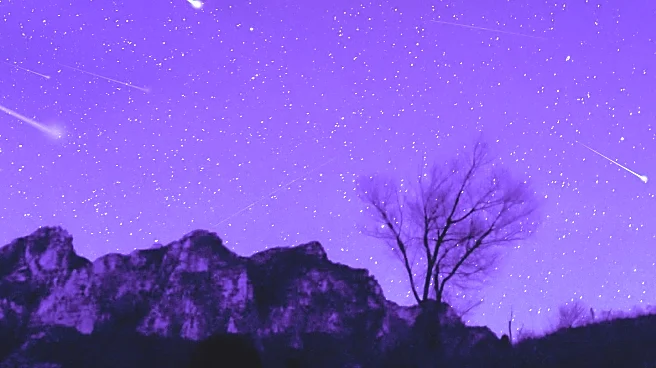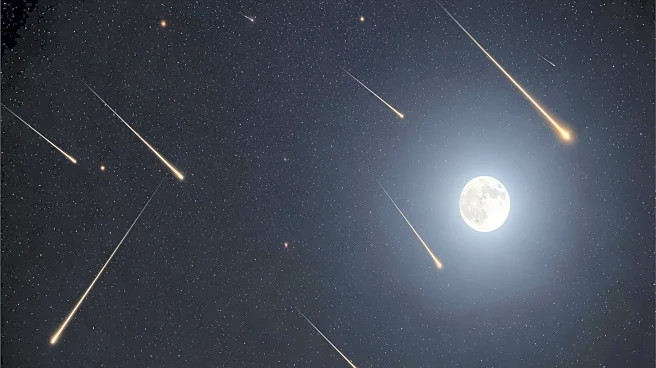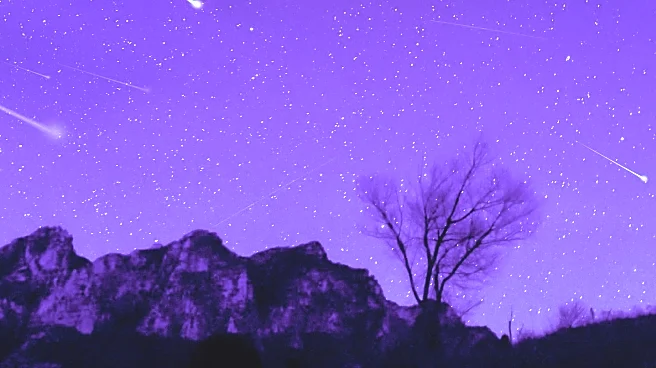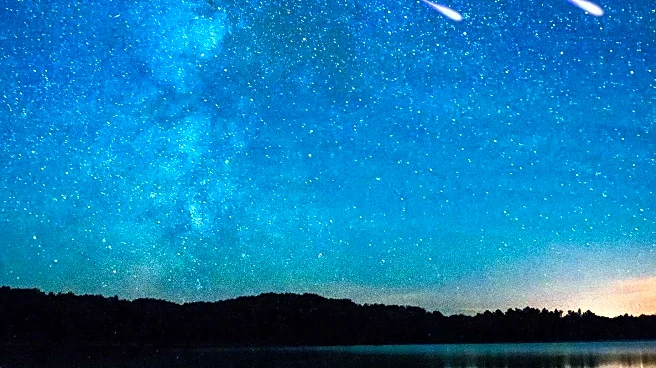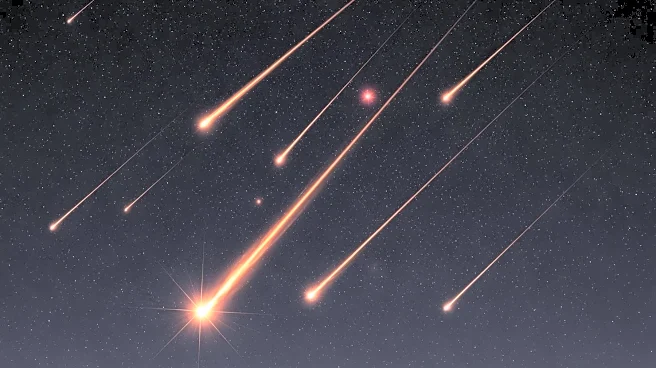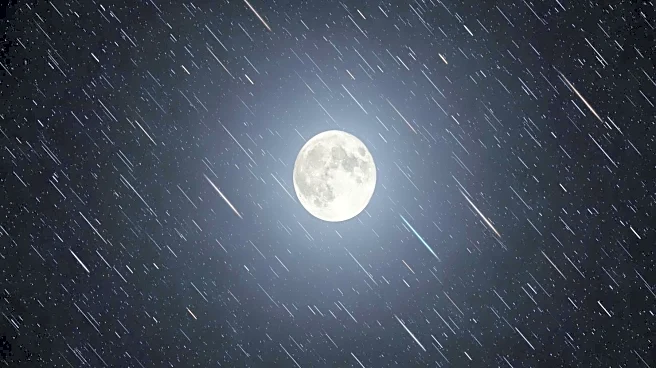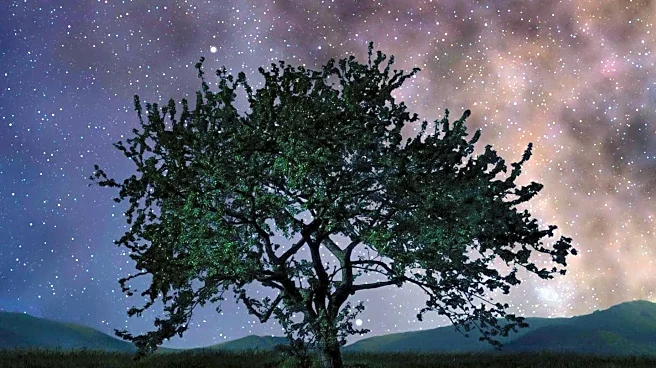What's Happening?
The Southern Taurids meteor shower is set to peak from the night of November 4 to the early morning of November 5, coinciding with the Northern Taurids and Orionids meteor showers. This celestial event
occurs just before the November supermoon, which may affect visibility due to its brightness. The Southern Taurids are known for producing fireballs, which are brighter than typical meteors. The shower is expected to be visible worldwide, except at the South Pole, with the best viewing conditions away from light pollution.
Why It's Important?
Meteor showers like the Southern Taurids offer a unique opportunity for stargazers and astronomers to observe celestial phenomena. However, the timing of this shower with the supermoon may hinder visibility, highlighting the challenges of astronomical observations. This event underscores the importance of understanding celestial mechanics and their impact on night sky visibility. It also serves as a reminder of the natural wonders that can be observed without the need for specialized equipment.
What's Next?
As the Southern Taurids peak, stargazers are advised to find dark locations away from city lights to maximize their viewing experience. The presence of the supermoon means that other meteor showers occurring later in the year, such as the Leonids and Ursids, may offer better viewing conditions due to less interference from moonlight. Enthusiasts are encouraged to use apps like SkyView or SkySafari Pro to locate the Taurus constellation, from which the meteors appear to originate.
Beyond the Headlines
The occurrence of multiple meteor showers simultaneously presents an opportunity for scientific study and public engagement with astronomy. It highlights the need for continued public education on astronomical events and the importance of preserving dark skies for future generations. This event also emphasizes the role of technology in enhancing our understanding and appreciation of the universe.
